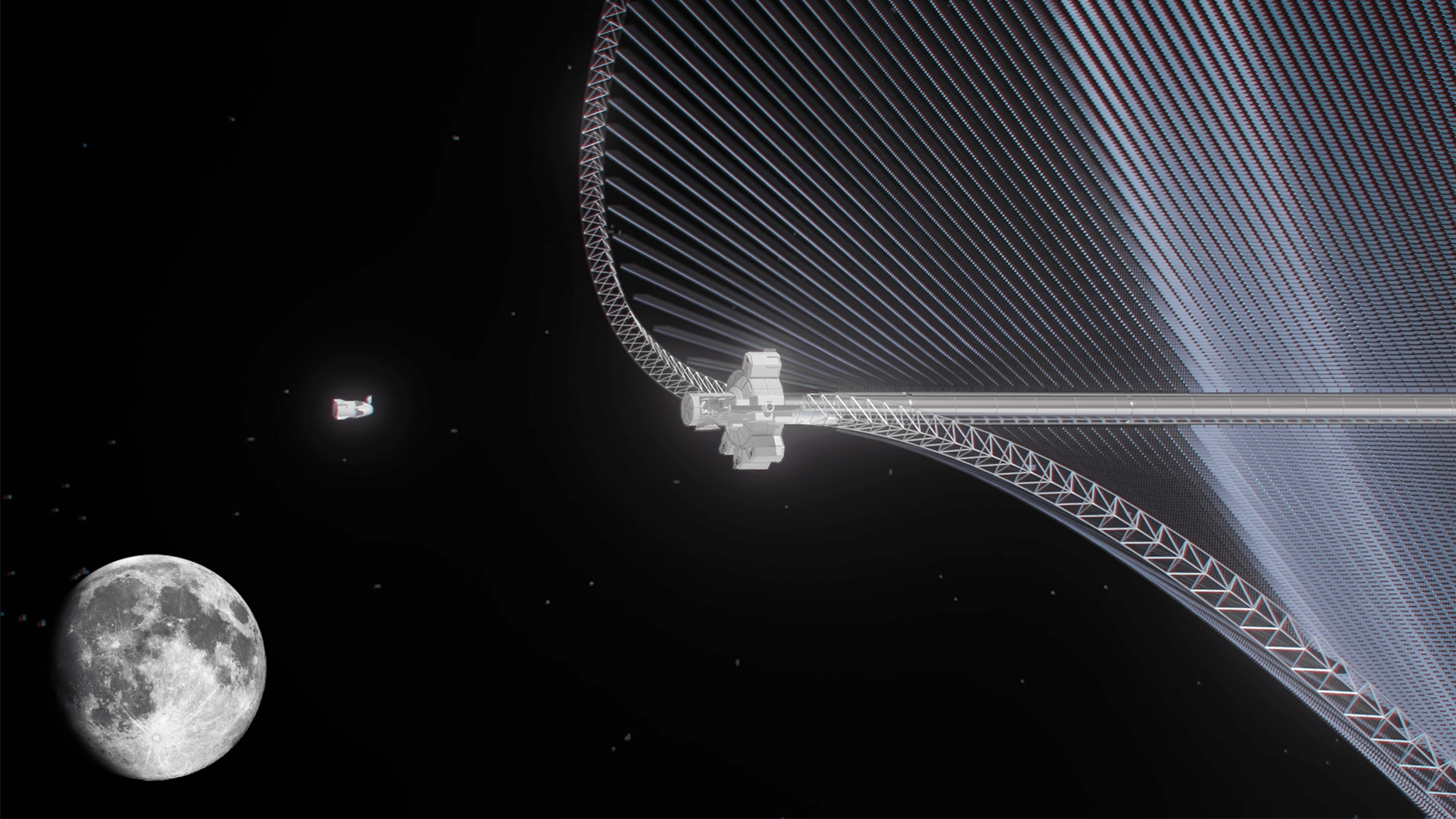Space-based solar power (SBSP) is considered one of the most promising technologies for addressing Climate Change. The concept calls for satellites in Low Earth Orbit (LEO) to collect power without interruption and beam it to receiving stations on Earth. This technology circumvents the main limiting factor of solar energy, which is how it is subject to the planet’s diurnal cycle and weather. While the prospect of SBSP has been considered promising for decades, it’s only in recent years that it has become practical, thanks to the declining costs of sending payloads to space.
However, the technology has applications beyond providing Earth with abundant clean energy. The European Space Agency (ESA) is also investigating it as a means of proving power on the Moon through the “Clean Energy – New Ideas for Solar Power from Space” study, which recently yielded a technology demonstrator known as the Greater Earth Lunar Power Station (GEO-LPS). This technology could provide a steady supply of power for future operations on the Moon, which include creating a permanent lunar base like the ESA’s proposed Moon Village.
The GEO-LPS concept was designed by Switzerland-based company Astrostrom through the agency’s Open Space Innovation Platform (OSIP) campaign and with funding provided by the ESA’s Discovery program. The study envisions a solar power satellite operating at the Earth-Moon L1 Lagrange Point, roughly 61,350 km (38,120 mi) from the lunar surface, continuously gathering 23 megawatts (MWs) of energy and beaming it to receivers on the lunar surface via microwaves emitters. This satellite would serve the needs of future surface activities, including future surface habitats and installations.

The design, inspired by the shape of a butterfly, features V-shaped solar panels with integrated antennas deployed in a helix configuration that measure more than a square kilometer (0.386 mi) in diameter. The solar cells are based on previous ESA-supported research, which showed how iron pyrite monograin-layer solar cells could be manufactured using lunar regolith. As the Astrom team indicated in their proposal, this combination of in-situ resource utilization (ISRU) and in-orbit assembly would overcome one of the main challenges of SBSP:
“The main obstacle to implementing SBSP is launching a solar power satellite (SPS) from the surface of Earth. John Mankins’ SPS-ALPHA Mark-II concept proposes that the photovoltaic (PV) power generation system would consist of an extremely large number of mass-produced modular PV elements that would ‘self-assemble’ into the SPS structure. David Criswell introduced a significant variation of the SPS concept called the Lunar Power System (LPS) which proposed the in-situ use of lunar materials for the construction of the SPS elements.”
Construction of these elements would be handled by an automated manufacturing process, which would be connected to a mass driver system for deploying the elements into lunar orbit. In addition to providing power, the toroidal design allows for a central habitat and control center that uses water and “lunarcrete” to provide shielding against radiation. It would also serve as a gateway between the Earth and Moon, providing simulated gravity by rotating on its axis, allowing people destined for the Moon to adapt to lunar gravity in advance or readjust to Earth’s gravity before returning home. As the team stated:
“The GE?-LPS incorporates an ion electric propulsion system to enable artificial gravity for crew and guests as well as to provide maneuverability and attitude control. As the lunar manufacturing operations could be scaled to any dimension, SPSs assembled in Earth orbit could provide much-needed clean solar energy for terrestrial purposes.”
Multiple space agencies plan to construct lunar habitats around the South-Pole Aitken Basin during this decade and the next. This includes NASA’s Artemis Basecamp, the ESA’s Moon Village, and the Chinese-Russian International Lunar Research Station (ILRS). In addition to being an elegant solution for meeting the power needs of these facilities, lunar-made solar satellites also offer several benefits for Earth. For starters, they would require around five times less delta-v (acceleration) to place them into a geostationary Earth orbit (GSO) compared to satellites launched from Earth.
In addition, the study found that solar satellites produced on the Moon would be cheaper than those manufactured on Earth and that the electricity generated would be cost-competitive with any terrestrial power alternative. Finally, the study found that GEO-LPS could be achieved without any additional technological breakthroughs. Most of the core technologies and processes – including lunar mining, beneficiation, and fabrication – are already in use or under development today. While some significant engineering would be involved, these could be extrapolated or adapted to the lunar environment without much trouble.
Ultimately, the purpose of the GEO-LPS is to validate key technologies that will inform the ESA’s SOLARIS research and development initiative. This initiative aims to assess the technical, political, and program-related viability of SBSP and the large-scale production of solar satellites to meet Earth’s growing need for clean energy alternatives. As Sanjay Vijendran, the ESA Mars Exploration Strategy Team Leader and head of the SOLARIS initiative, explained:
“Launching large numbers of gigawatt-scale solar power satellites into orbit from the surface of the Earth would run into the problem of a lack of launch capacity as well as potentially significant atmospheric pollution. But once a concept like GEO-LPS has proven the component manufacturing processes and assembly concept of a solar power satellite in lunar orbit, it can then be scaled up to produce further solar power satellites from lunar resources to serve Earth.”
This study could lead to a prototype for future settlements in cislunar space that could facilitate lunar exploration and private interests – such as lunar mining, near-Earth asteroid mining, lunar tourism, and other commercial space ventures. “This would also create many other benefits in addition to providing sufficient clean energy for Earth,” added Sanjay, “including the development of a cislunar transportation system, mining, processing, and manufacturing facilities on the Moon and in orbit resulting in a two-planet economy and the birth of a spacefaring civilization.”
Further Reading: ESA

